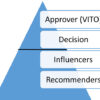As a Business Development Representative (BDR), your success largely hinges on your ability to effectively connect with potential clients through calls and emails. Meeting call and email metrics is crucial not just for day-to-day performance but also as leading indicators for long-term success. Here’s why these metrics matter and how they can guide you toward achieving your sales goals.
1. Call and Email Metrics
Call Connection Rate
- Benchmark: 15-20%
- Details: This measures the percentage of outbound calls that result in a conversation with a potential decision-maker. A higher connection rate indicates better targeting and/or more effective calling strategies.
- Contextual Variations:
- Industry: In B2B sales, connection rates might be lower due to gatekeepers.
- Market: Saturated markets may have lower connection rates.
Reasons for Low Call Connection Rates:
- Bad Data: Incorrect or outdated contact information can lead to calls not reaching the intended decision-makers.
- Time of Day: Calling at times when potential clients are less likely to be available (e.g., early morning or late afternoon) can result in lower connection rates.
- Targeting Issues: Not having a well-defined target list can lead to calls being made to the wrong contacts.
- Call Quality: Ineffective call scripts or poor delivery can cause prospects to disengage quickly.
Meeting your call connection rate is vital because it reflects your ability to reach the right people. High connection rates suggest that you’re not just dialing numbers at random but are targeting your calls effectively. This metric also helps identify whether your call scripts and approaches are resonating with potential clients.
Email Response Rate
- Benchmark: 10-15%
- Details: This measures the percentage of outbound emails that receive a response. Effective subject lines, personalized content, and clear calls to action can improve this rate.
- Contextual Variations:
- Industry: Tech industries often have higher response rates due to the digital nature of communication.
- Email Type: Initial outreach vs. follow-up emails.
Reasons for Low Email Response Rates:
- Poor Subject Lines: If the subject line is not compelling or relevant, recipients are less likely to open the email.
- Lack of Personalization: Generic emails that don’t address the recipient’s specific needs or interests are often ignored.
- Weak Calls to Action: Emails without clear, actionable steps can fail to prompt a response.
- Timing: Sending emails at times when recipients are less likely to check their inbox can reduce response rates.
- Content Quality: Emails that are too lengthy, unclear, or poorly structured can deter recipients from responding.
Your email response rate is a clear indicator of how well your emails are crafted and targeted. High response rates mean your subject lines are compelling, your content is relevant, and your calls to action are clear and persuasive. This metric helps ensure that your outreach efforts are generating interest and engaging potential clients.
2. Conversion Rates from Call Connections to Meetings
Connection Rate to Meetings
- Benchmark: Above 4% is good; above 6% is excellent.
- Details: This measures the percentage of connected calls that lead to a scheduled meeting. Higher rates suggest effective qualification and engagement strategies.
- Contextual Variations:
- Titles and Roles: Targeting decision-makers with appropriate titles can improve conversion rates.
- Time of Day: Calling at optimal times when decision-makers are more likely to be available can enhance conversion rates.
Reasons for Low Conversion Rates:
- Targeting Issues: Not reaching the right decision-makers can result in lower conversion rates.
- Ineffective Pitch: Poorly delivered pitches or lack of clear value propositions can fail to engage prospects.
- Follow-up Strategy: Inadequate follow-up can result in missed opportunities to convert initial conversations into meetings.
Conversation Rate
- Benchmark: Conversations lasting over 60 seconds are considered meaningful engagements.
- Details: This measures the percentage of calls that turn into meaningful conversations lasting more than 60 seconds. Higher rates indicate better engagement and interest from the prospects.
Improving Conversation Rates:
- Coaching on Intros: Training on effective introduction techniques can help capture interest quickly.
- Handling Objections: Teaching how to address shallow objections early can keep the conversation going.
- Active Listening: Encouraging active listening skills can help tailor the conversation to the prospect’s needs.
Conversation to Meeting Conversion Rate
- Benchmark: 60% of connections turn into conversations, and at the very least, 10% of those conversations should ideally convert into meetings.
- Details: This measures the effectiveness of transitioning from initial conversations to scheduled meetings. High conversion rates indicate strong qualification skills and compelling value propositions.
Improving Conversion Rates:
- Clear Value Proposition: Clearly communicating the value and benefits of your product or service can increase interest.
- Effective Questioning: Asking the right questions to uncover needs and pain points can help in converting conversations to meetings.
- Follow-up: Timely and consistent follow-up can ensure that interested prospects do not fall through the cracks.
Why Meeting These Metrics Matters
- Leading Indicators of Success: Consistently meeting call and email metrics acts as a leading indicator of future sales success. High call connection and email response rates typically precede the closing of deals and the achievement of sales targets. By monitoring these metrics, you can predict and influence your overall sales performance.
- Benchmarking Performance: Consistently meeting call and email metrics allows you to benchmark your performance against industry standards. This helps you understand where you stand and identify areas for improvement.
- Improving Targeting and Messaging: Analyzing your connection and response rates can reveal insights into the effectiveness of your targeting and messaging strategies. For instance, low connection rates might indicate a need to refine your target list or adjust your call script, while low email response rates might suggest a need to tweak your subject lines or email content.
- Enhancing Sales Strategies: Meeting these metrics helps you fine-tune your sales strategies. By understanding what works and what doesn’t, you can continuously improve your approach to maximize your chances of success.
- Building Pipeline: As a BDR, your primary goal is to build a strong sales pipeline. Consistently hitting your call and email metrics ensures that you’re consistently adding qualified leads to your pipeline, which is essential for driving sales and achieving revenue goals.
- Accountability and Goal Setting: Regularly tracking and meeting call and email metrics helps maintain accountability and sets clear, achievable goals. This not only boosts your productivity but also provides a structured path to success.
For BDRs, meeting call and email metrics is more than just a numbers game. It’s about optimizing your efforts to connect with potential clients effectively, building a strong sales pipeline, and continuously improving your sales strategies. By focusing on these key metrics and striving to meet or exceed industry benchmarks, you can significantly enhance your chances of success in the competitive world of sales.
These metrics are leading indicators to ensure that you’re on the right path to achieving your broader sales goals, making it crucial to monitor and meet them consistently. If they are not, then your BDR Manager needs to understand why and either coach you on how to correct them or resolve issues out of your control.










